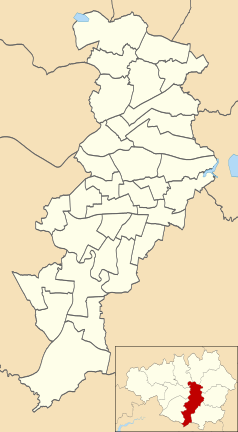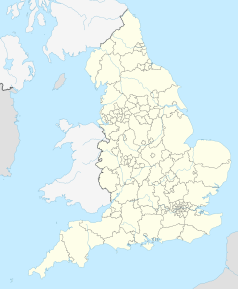The University of Manchester

| |
| Dewiza |
Cognitio, sapientia, humanitas (Wiedza, mądrość, humanizm) |
|---|---|
| Data założenia |
2004, z połączenia Uniwersytetu Wiktorii w Manchesterze (zał. w 1851) i Instytutu Naukowo-Tech-nicznego Uniwersytetu w Manchesterze (zał. w 1824) |
| Typ | |
| Państwo | |
| Adres | |
| Liczba pracowników |
10 400 |
| Liczba studentów |
40 000 |
| Członkostwo | |
Położenie na mapie Manchesteru  | |
Położenie na mapie Wielkiej Brytanii  | |
Położenie na mapie Anglii  | |
Położenie na mapie Wielkiego Manchesteru  | |
| Strona internetowa | |
Uniwersytet Manchesterski[1][2] (ang. The University of Manchester) – brytyjski uniwersytet publiczny w Manchesterze.
Historia
[edytuj | edytuj kod]Uczelnia w obecnym kształcie została utworzona w 2004 przez połączenie Uniwersytetu Wiktorii w Manchesterze (ang. Victoria University of Manchester) i Instytutu Naukowo-Technicznego Uniwersytetu w Manchesterze (ang. University of Manchester Institute of Science and Technology, UMIST). Po 100 latach współpracy obie instytucje uformowały jeden uniwersytet[3].
Znani absolwenci i pracownicy
[edytuj | edytuj kod]Uniwersytet i wcześniejsze instytucje, z których powstał, mogą pochwalić się 25 noblistami – wśród nich są:
- Ernest Rutherford (chemia, 1908)
- Niels Bohr (fizyka 1922)
- James Chadwick (fizyka, 1935)
- Jean Blondel (administracja publiczna, 1957) – politolog
- Joseph E. Stiglitz (ekonomia, 2001) – pracownik naukowy[4]
- John Sulston (fizjologia i medycyna, 2002) – pracownik naukowy[4]
- Andriej Gejm (fizyka, 2010) – pracownik naukowy[4]
- Konstantin Nowosiołow (fizyka, 2010) – pracownik naukowy[4].
Zobacz też
[edytuj | edytuj kod]- Manchester Metropolitan University
Przypisy
[edytuj | edytuj kod]- ↑ Jerzy Giedroyć, Konstanty A. Jeleński, Listy 1950–1987, W. Karpiński (oprac.), Warszawa: Czytelnik, 1995, s. 257.
- ↑ Nowoczesne metody badawcze w psychologii, red. Władysław J. Paluchowski i in., Poznań 2012, s. 83.
- ↑ History and heritage. University of Manchester. [dostęp 2016-12-29]. (ang.).
- ↑ a b c d Our Nobel Prize winners. University of Manchester. [dostęp 2016-12-29]. (ang.).
- ISNI: 0000000121662407
- VIAF: 157695433
- ULAN: 500312905
- LCCN: n80126193
- GND: 6036820-2
- LIBRIS: 20dhpdrl1qgvvlf
- BnF: 12141490k
- SUDOC: 030575923
- NLA: 36190867
- NKC: ko2008481052, ko2008481053
- BNE: XX140536
- BIBSYS: 90171696
- CiNii: DA01944567
- PLWABN: 9812677594605606
- NUKAT: n2015031603
- J9U: 987007269386405171
- PTBNP: 1210549
Text is available under the CC BY-SA 4.0 license; additional terms may apply.
Images, videos and audio are available under their respective licenses.
